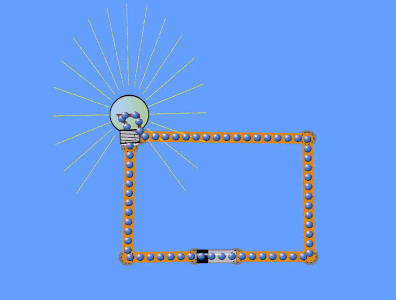Direct current

Direct current (DC) is an electric current that is uni-directional, so the flow of charge is always in the same direction.[2] As opposed to alternating current, the direction and amperage of direct currents do not change. It is used in many household electronics and in all devices that use batteries.[3]
Properties
Direct current is defined by the constant flow of electrons (see figure 1) from an area of high electron density to an area of low electron density. In circuits involving batteries, this is illustrated by the constant flow of charge from the negative terminal of the battery to the positive terminal of the battery. It is much more expensive and difficult to change the voltage of direct current as opposed to alternating current, making it a poor choice for the high voltage transmission of electricity. However, for very long distances, HVDC transmission can be more efficient than alternating current[2].
Uses
Direct current is used in any electronic device with a battery for a power source. It is also used to charge batteries, so rechargeable devices like laptops and cell phones come with an AC adapter that converts alternating current to direct current[2].
PhET Simulation
The University of Colorado has graciously allowed us to use the following PhET simulation. This simulation can be used to explore how direct and alternating currents work.
For Further Reading
For further information please see the related pages below:
References
- ↑ http://phet.colorado.edu/sims/circuit-construction-kit/circuit-construction-kit-ac_en.jnlp
- ↑ 2.0 2.1 2.2 R.T. Paynter, “Basic Electric Components and Meters,” in Introduction to Electricity, 1rst ed. NJ: Prentice-Hall, 2011, ch. 2, sec. 2.3, pp. 43-49.
- ↑ What is Direct Current [Online]. Available:http://www.powerinverters.org/pages/What-is-Direct-Current.html

